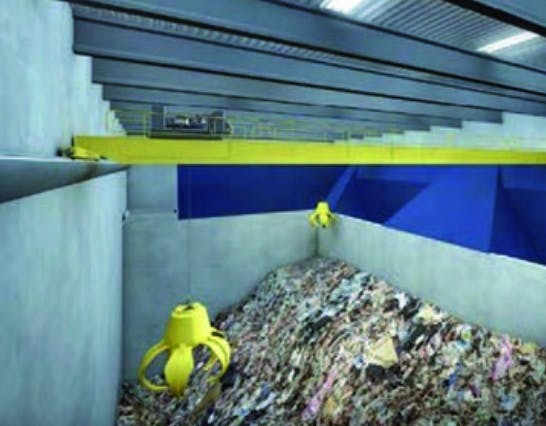ABB finds sustainability parallels health and safety
Key highlights
- ABB demonstrates how embedding sustainability into process operations can simultaneously improve efficiency and compliance.
- Technologies like ABB’s CEMS and ACF5000 enable real-time tracking of emissions, offering process engineers powerful tools to support regulatory compliance and optimize waste-to-energy processes.
Because automation, electrification and decarbonization are accelerating potentially chaotic energy transitions in the process industries, ABB has organized its efforts around three goals: enabling a low-carbon society, preserving resources, and promoting social progress. However, over time, it discovered these efforts were part of a larger, unified mission.
“We recognize that the journey for developing a strong sustainability culture has many similarities to maturing a good health and safety culture in an organization. In the very briefest terms, we’re shifting a culture driven by compliance to one of ‘care,’ ” says Andrew Sheward, global health, safety, environment and sustainability manager at ABB Measurement & Analytics. “This means embedding human rights like diversity and inclusion into everything we do, and looking out for people as we work towards a low-carbon society.”
Sheward reports that ABB begins with achieving internal sustainability in its processes and facilities. Such learning can help its customers, stakeholders and shareholders to do the same, and preserve resources by implementing circular good practices for its products from raw material management and continuing throughout their lifecycles. To tackle Scopes 1 and 2, ABB seeks green-energy sources, such as electricity from renewables by participating in the Climate Group’s EP100 Initiative, and employing ABB Ability Buildings Analyzer software and cloud-linked devices to submeter energy used in its facilities, reveal power-hungry processes, and reduce their consumption. In fact, Sheward reports that several ABB factories are already implementing it and expect to save 20% per year on their energy use.
CEMS checks waste-to-energy emissions
While it recently gained the ability to sense and monitor greenhouse gases (GHG) like methane from space, ABB has been detecting natural gas leaks from industrial infrastructure such as oil and gas pipelines, as well as using continuous emissions monitoring systems (CEMS) to optimize processes for many years, and is also employing these and similar monitoring technologies to optimize sustainability applications.
For example, ABB’s ACF5000 CEMS was recently picked to analyze emissions from the Amagerforbraending (Amager Bakke) waste-to-energy plant, located three kilometers from downtown Copenhagen, Denmark. Chief among this architecturally unique incinerator’s innovations is an angled roof that serves as a 31,000 m2 recreational ski slope and park, as well as emissions in the form of 25-meter-wide, 5-meter-thick smoke/vapor rings that each contain 250 kg of CO2, dramatically demonstrating the Bernoulli principle. The 279-foot-tall plant is designed to burn 400,000 tons of solid waste per year, and depending on operating mode, generate 0-63 megawatts (MW) of electricity and 157-247 MW of local district heating (Figure 1).
Get your subscription to Control's tri-weekly newsletter.
One of the main reasons the plant’s operator, Amager Resource Center, opted for ACF5000 is because it didn’t want to use an additional flame ionization detector (FID) module with hydrogen for public safety reasons. The new CEMS offers multi-component measurement and volatile organic compound (VOC) measurement via Fourier transform infrared (FTIR) spectroscopy combined with oxygen measurement. ACF5000 also has an internal validation unit and automated QAL3 quality-assurance evaluation, so reporting is possible without test gases, and costs, handling and operational risk can be minimized. ABB provided the utility with a complete, turnkey CEMS to achieve regulatory compliance.
Management buy-in still essential
Sheward emphasizes that jumpstarting any sustainability initiative, such as reducing CO2 emissions, must be an embedded business strategy by committed management.
“The passion for such a business direction has to be visible from the top, giving the opportunity to inspire others. Sustainability begins with measurement, and managers and their teams must understand and celebrate the numbers. They must quantify sustainability improvements, and show their financial payback to excite and motivate people beyond simple compliance,” says Sheward. “Maintaining sustainability into the future will also require engagement on softer issues, such as maturing health-and-safety cultures, but they also must be supported by robust, traceable, validated and objective facts that enable better decisions.”
If each product has metrics associated with it, then users can compare parameters like CO2 equivalent lifecycle performance like-for-like with products, and make more objective decisions. To develop product-specific metrics for industrial sensors, ABB’s Process Automation Measurement & Analytics division works with steering committees and stakeholders to develop specific rules to perform industrial lifecycle assessments (LCA), which are used to generate environmental product declarations (EPD). An EPD lets customers compare products.
“We’re going to see more EPDs in the future because they allow suppliers to state the sustainability performance of their product and give customers the ability to choose based on environmental impacts,” adds Sheward. “We’re spearheading the EPD effort at ABB, and our participation involves aligning with standards that can show our products have a robust lifecycle, and can go through the LCA process to complete an EPD that a third-party can confirm is valid. Sustainability is founded on accurate measurements, so the EPD process is all about producing numbers that are quantifiable, assured, traceable and verifiable.”
This is part three of Control's July sustainability feature. Read the other installments here.
About the Author

Leaders relevant to this article:


